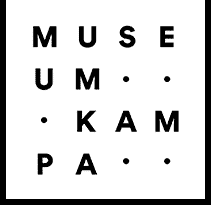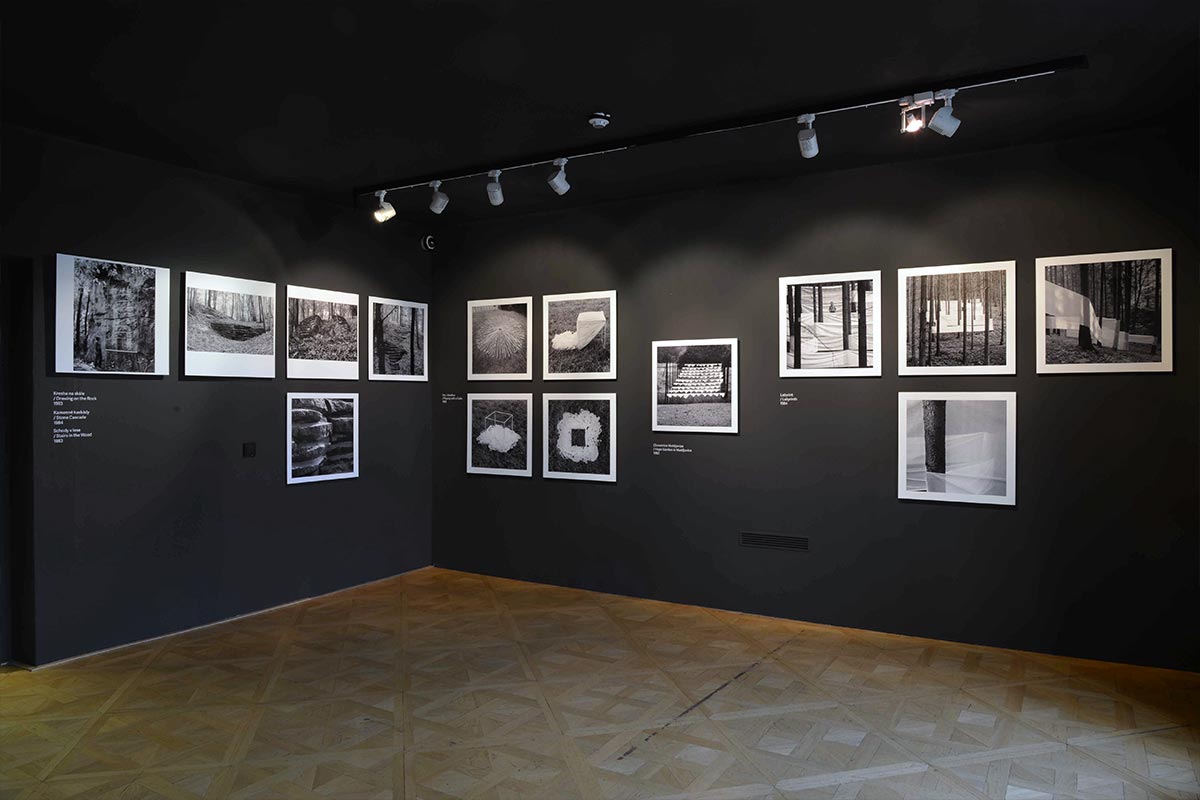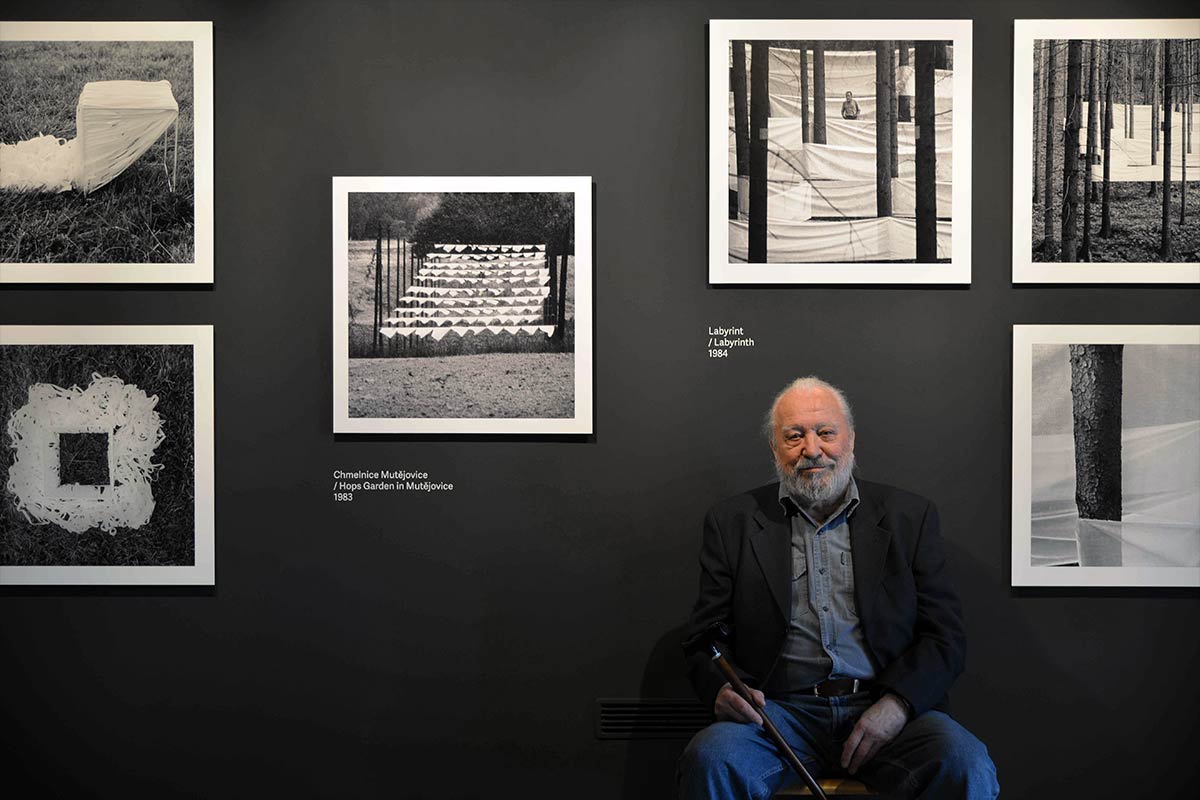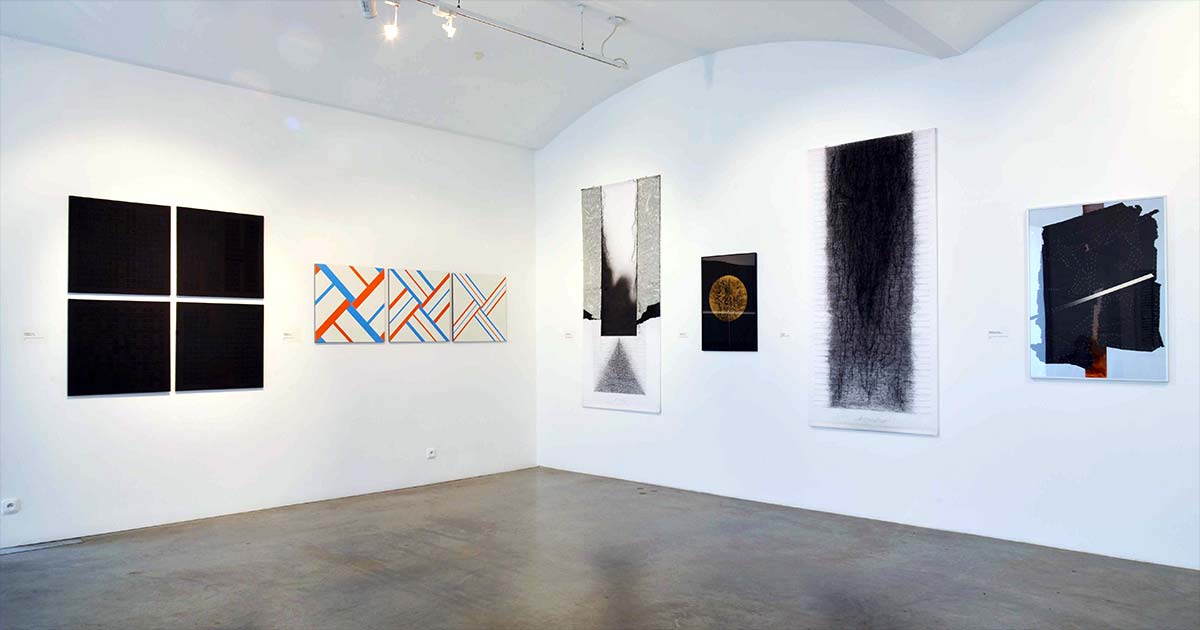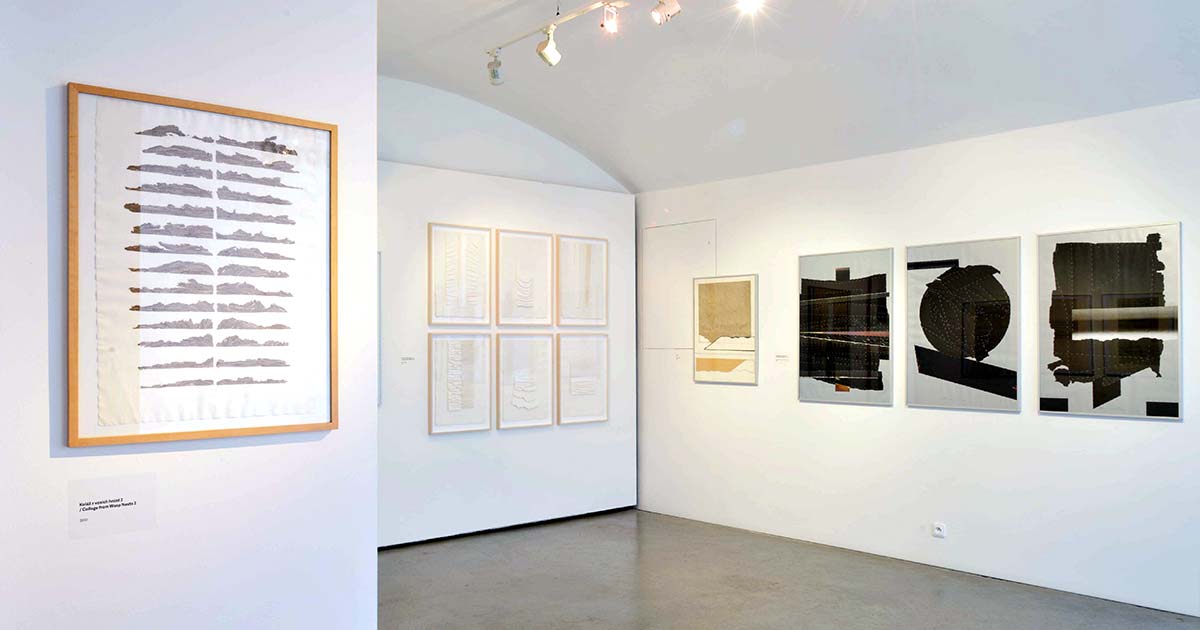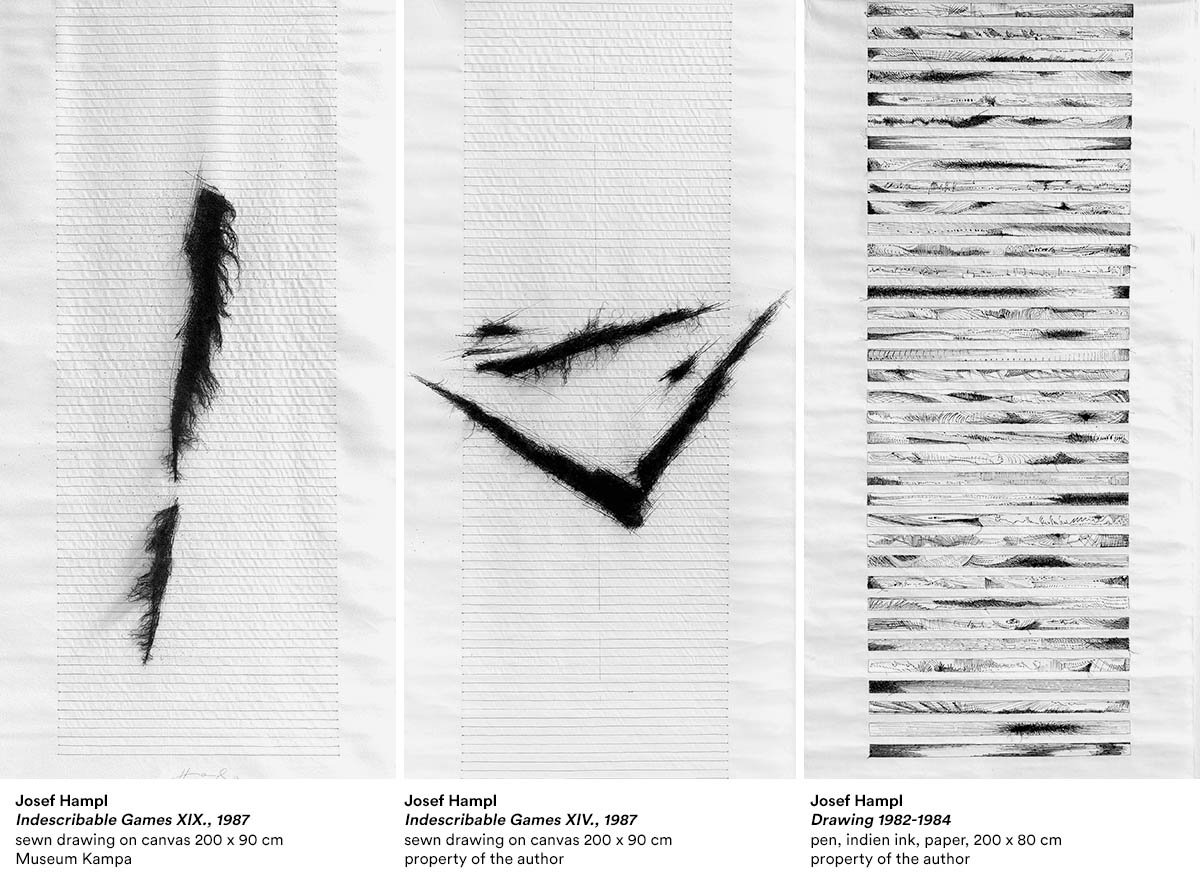Josef Hampl’s work during 1959 – 2016 was always based on graphic media, be it collages, drawings, installations or events. Essential for the artist were visits with Vladimír Boudník, Bohumír Hrabal and Jiří Kolář. Very influential was Boudník’s activism, with which the artist approached life just as art – as one of the possibilities of salvation, and was diametrically different from the official doctrine of social realism.
Since the beginning, Josef Hampl experimented with irregular shapes of matrixes, blind embossing, linocuts, negative prints and monotype collages, drawings using a roller or sander, and with differing materials and techniques. On the threshold of the sixties, almost sculpturesque Art Informel paintings emerged, in which original recordings of an event were transformed into signs, intermingling with symbolism and with gesture. The burden of fate that was part of his original approach towards material was gradually replaced by very clean, clear and rational geometry and rasters.
The 1978 event in nature with white organdie, which was captured by his colleague, the photographer Hana Hamplová, comes across as a monumental drawing. The artist used the white fabric to quilt the landscape and the forest. The hanging, folding and intertwining of the fabric was a reaction to the boredom and immobility of the time. The machine sewn drawings-collages, reminiscent of a Japanese kakejiku – monumental hanging scrolls are in continuous motion, in continual transformation and deliberate endlessness.
Hampl used various forms of collage techniques since the seventies, and gradually enriched it with using a quilting machine or paper clips. He used postcards, exhibition invitations or long forgotten material, and carbon paper. The motif of black on black returns to black matter and to Malevich’s restart of art from the beginning of the twentieth century. Since 2010, the author works with living matter of wasp nests. Hampl relocated from busy Prague to the countryside, and discovered in the above-mentioned material plasticity, graphic quality and stored record of time.
Josef Hampl, a collector of African masks, is one of the last witnesses of the Messianic role of art, which originated with Vladimír Boudník. Hampl perceives art as creative work, as a research of symbolic space, which he systematically explored down to the last detail in all its imaginable nuances.
Curator: Martina Vítková
Exhibition hall in the Stables Building
Visitors: 7 607
